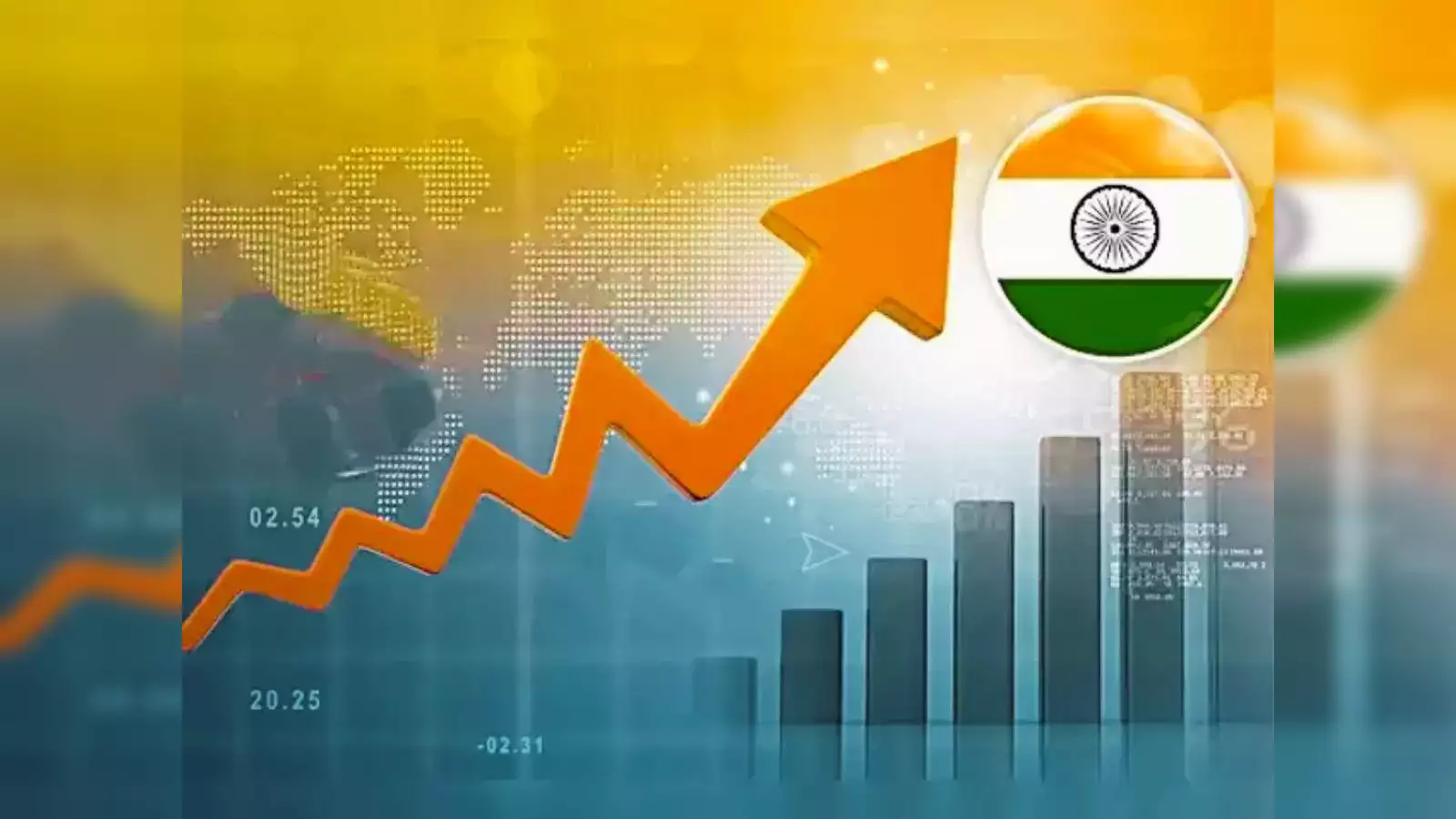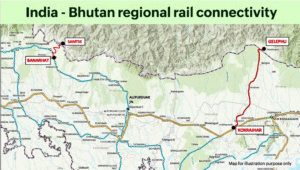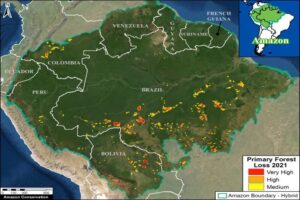
Health of India’s Economy: Growth, Challenges, and Global Comparisons
Introduction
India’s economy, currently the fastest-growing major economy in the world, has often been projected as a bright spot amid global uncertainty. However, it is not free from challenges. Recently, former U.S. President Donald Trump sparked debate by describing India’s economy as “dead,” despite the fact that India has consistently outpaced most countries in terms of GDP growth. His statement drew sharp reactions from Indian leaders, economists, and international observers.
The incident triggered a renewed discussion on the “health of India’s economy”, raising questions about growth quality, sustainability, and the gap between headline GDP numbers and ground realities such as unemployment, inflation, and inequality.
For CLAT 2026 aspirants, this issue is crucial for Current Affairs 2026 since it combines economic law, global trade, constitutional principles (Article 301: Freedom of Trade, Commerce, and Intercourse), and political economy. At CLAT Gurukul, regarded as the best online coaching for CLAT, we emphasize studying such debates in detail because they not only provide context for legal reasoning but also help aspirants link law with real-world issues.
Why in News?
- On July 30, 2025, Donald Trump imposed new tariffs on India, penalizing it for continuing trade with Russia (especially in military and energy sectors).
- He described India’s economy as “dead,” sparking controversy.
- Indian leaders, including Finance Minister and Commerce Minister, strongly rejected the claim, highlighting India’s rise from the 11th largest economy in 2010 to the 5th largest economy today.
- The debate gained global attention as IMF and World Bank data reveal India’s impressive growth alongside persistent vulnerabilities.
Point-wise Summary of the Article
- Trump’s Criticism
- Trump called India’s economy “dead,” claiming tariffs are justified due to India’s continued ties with Russia.
- He asserted that the U.S. has “very little business with India” because India’s tariffs are high.
- India’s Response
- Finance Minister and leaders from ruling and opposition parties rejected Trump’s claim.
- They highlighted that India has risen from being seen as a “fragile economy” to the world’s fastest-growing economy.
- India’s contribution to global GDP has risen to 16% of global growth, showing resilience.
- Global Economic Data
- IMF data show:
- India’s GDP in 1995: $327 billion.
- India’s GDP in 2025: Projected at $4,336 billion.
- Growth relative to 1995: 1,327%.
- Compared with others (1995–2025):
- Japan: +72.6%.
- Germany: +174%.
- UK: +185%.
- China: +2,082%.
- Thus, while China has outpaced India, India’s performance remains far stronger than developed economies.
- Concerns for India
- Unequal Growth: Despite GDP growth, per capita income remains low.
- Employment Challenge: Growth hasn’t translated into enough job creation.
- Agricultural Stress: Rural and farm distress continue, even as the economy grows.
- Trade Deficits: India still imports more than it exports, leading to current account vulnerabilities.
- Sectoral Gaps: Manufacturing lags behind services, affecting balanced development.
- India’s Achievements
- India jumped from the 11th to 5th largest economy in just over a decade.
- GDP expanded more than 13 times from 1995 to 2025.
- India is projected to cross $5 trillion GDP mark soon, making it the third-largest economy by 2030.
- Global Comparisons
- U.S. remains the largest economy at $30.5 trillion.
- China grew fastest, from $736 billion (1995) to $16 trillion (2025).
- India’s trajectory puts it in the same conversation as emerging superpowers.
Concerns for India
- Slower Pace of Structural Growth
- India grew fast post-1991 reforms but hasn’t repeated such structural shifts since.
- Trade Deficit with China
- While China grew massively, India depends heavily on imports from China, especially electronics.
- Employment Issues
- High GDP growth hasn’t generated proportional jobs.
- India faces a classic jobless growth problem.
- Rural Economy Distress
- Agriculture contributes less to GDP but supports 40%+ of the population.
- Farmers face rising input costs, water scarcity, and low crop prices.
- Global Trade Tensions
- U.S. tariffs hurt India’s exports.
- Overdependence on Russia for energy complicates foreign policy.
Explanation of Peculiar Terms
- GDP (Gross Domestic Product) – The total market value of goods and services produced in a country in a year.
- Per Capita Income – Average income earned per person in a nation, derived by dividing GDP by population.
- Current Account Deficit (CAD) – When a country imports more goods, services, and capital than it exports.
- IMF (International Monetary Fund) – Global institution that provides economic data and financial support to member nations.
- Jobless Growth – A situation where GDP grows but employment does not rise proportionally.
- Tariff – Tax imposed on imported goods, used as a tool in trade wars.
- Fragile Five – A term used for economies (including India in 2013) vulnerable to external shocks.
Constitutional & Legal Relevance for CLAT
- Article 301 – Freedom of trade, commerce, and intercourse throughout India.
- Article 302–305 – Parliament’s power to impose restrictions on trade in public interest.
- Foreign Trade (Development & Regulation) Act, 1992 – Governs India’s trade policies.
- SEZ Act, 2005 – Promotes export-oriented industries.
- Judicial Angle – Courts have often balanced economic policy with fundamental rights, e.g., Right to Livelihood under Article 21.
Broader Implications
- India’s Rising Status
- Despite criticisms, India’s growth trajectory ensures it is considered among the top three economies of the future.
- Balancing Growth with Equity
- For sustainable growth, India must focus on jobs, rural economy, and inequality reduction.
- Global Geopolitics
- Trade wars with the U.S. and dependence on Russia highlight how economics and geopolitics intertwine.
- Relevance to CLAT 2026
- Demonstrates the link between law, economy, and international relations.
- Useful for Legal Reasoning passages where trade, tariffs, and economic laws are tested.
Conclusion
India’s economy is far from “dead.” In fact, it is among the fastest-growing major economies globally, with impressive gains in GDP over the last three decades. However, Trump’s criticism highlights real challenges—jobless growth, rural distress, trade imbalances, and dependence on external economies.
For CLAT Current Affairs 2026, this issue serves as a vital case study. It shows how economic data must be critically analyzed beyond growth headlines. Students preparing with online coaching for CLAT at CLAT Gurukul, the best online coaching for CLAT, should note how this debate connects economic facts, constitutional provisions, and global trade relations. It demonstrates how legal frameworks regulate economic growth while addressing global challenges.
This Blog is Powered by CLAT Gurukul — India’s Leading Law Entrance Prep Platform
At CLAT Gurukul, we believe in empowering future legal minds with the right blend of knowledge, strategy, and mentorship. This blog is a reflection of our commitment to quality content that not only helps aspirants stay updated but also sharpens their conceptual clarity.
Why CLAT Gurukul?
- Personalized Mentorship by Top Legal Educators
- Comprehensive Study Materials & Legal Updates
- Daily Practice Sets, Mocks & Performance Tracking
- Result-Oriented Strategy for CLAT, AILET, and CUET
Whether you’re reading this article to deepen your understanding or to stay ahead in your exam prep — you’re already one step closer with CLAT Gurukul by your side.
Join thousands of successful aspirants who trusted CLAT Gurukul and cracked India’s top law entrance exams.
Visit https://www.youtube.com/@CLATGurukul/shorts to learn more or speak to our experts now!
Note from CLAT Gurukul
At CLAT Gurukul, we are committed to providing free CLAT study material, including CLAT current affairs, legal reasoning practice sets, general knowledge updates, logical reasoning questions, English comprehension exercises, and more — all curated by top mentors.
Our blog section is regularly updated with high-quality CLAT content tailored to match the evolving pattern of the CLAT UG exam. Whether you’re looking for CLAT 2026 current affairs, CLAT legal reasoning passages, or mock practice sets, we have you covered.
We believe in open-access learning and will continue to publish free CLAT preparation resources to help serious aspirants succeed.
Explore more free content under categories like:
Best online coaching for CLAT, CLAT current affairs, CLAT GK updates, CLAT legal updates, CLAT logical reasoning, and CLAT English preparation.
For structured learning, daily mocks, and expert mentorship, visit https://www.youtube.com/@CLATGurukul/shorts — the Best CLAT Coaching in Patna and India’s most trusted platform for CLAT online coaching.




